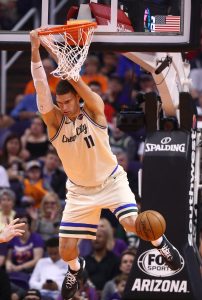Players and teams have to meet certain criteria to earn Bird rights and Early Bird rights, but Non-Bird rights are practically a given. They apply to a player who has spent a single season or less with his team, as long as he finishes the season on an NBA roster. Even a player who signs on the last day of the regular season and spends just one day with his club would have Non-Bird rights in the offseason.
Teams can also claim Non-Bird rights on Early Bird free agents if they renounce them. The primary motivator to do so would be to allow the team to sign the free agent to a one-year contract, a move that’s not permitted via Early Bird rights.
Teams are eligible to sign their own free agents using the Non-Bird exception for a salary starting at 120% of the player’s previous salary, 120% of the minimum salary, or the amount of a qualifying offer (if the player is a restricted free agent), whichever is greatest. Contracts can be for up to four years, with 5% annual raises.
The cap hold for a Non-Bird player is 120% of his previous salary, unless the previous salary was the minimum. In that case, the cap hold is equivalent to the two-year veteran’s minimum salary. If a Non-Bird free agent only has one year of NBA experience, his cap hold is equivalent to the one-year veteran’s minimum salary.
The salary limitations that apply to Non-Bird rights are more severe than those pertaining to Bird rights or Early Bird rights, so in many cases, the Non-Bird exception may not be enough to retain a well-regarded free agent. For instance, the Bucks held Brook Lopez‘s Non-Bird rights last summer, but were unable to realistically use them to re-sign the free agent center.
Because Lopez’s 2018/19 salary was only $3,382,000, the club’s ability to offer a raise using the Non-Bird exception was extremely limited — 120% of Lopez’s previous salary worked out to just $4,058,400, which wouldn’t have been a competitive starting point for an offer.
In order to bring back Lopez, who ultimately signed a new four-year, $52MM deal with Milwaukee, the team had to use cap room or another exception. The Bucks ended up making a series of moves that allowed them to carve out the cap space necessary to pay Lopez $13MM annually.
Holding Non-Bird rights on a free agent didn’t really help the Bucks in that scenario, but there are cases in which the exception proves useful. For instance, the Clippers will only have Non-Bird rights on Marcus Morris this offseason, but because his ’19/20 salary is $15MM, Los Angeles would be able to offer a starting salary worth up to $18MM. That should give the club plenty of flexibility to re-sign Morris without using cap room or another exception, if there’s mutual interest in a new deal.
Although no contracts signed during the 2019 offseason fit the bill, Luke Kornet‘s 2018 contract with the Knicks provides an example of a team using Non-Bird rights on a minimum salary player. Kornet, whose minimum salary would have been $1,349,383 in ’18/19, was eligible to sign for up to 120% of that amount via the Non-Bird exception. As such, his one-year deal with New York was worth $1,619,260.
Finally, it’s worth noting that a player who re-signs with his previous team on a one-year deal and will have Early Bird or Bird rights at the end of that contract would surrender those rights if he consents to a trade. In that scenario, he’d only finish the season with Non-Bird rights.
This happened to Rodney Hood in 2019, when he agreed to a trade that sent him from Cleveland to Portland. Because he lost his Bird rights by consenting to the deal, Hood only had Non-Bird rights during the 2019 offseason, so the Trail Blazers had to use their taxpayer mid-level exception to re-sign him.
Note: This is a Hoops Rumors Glossary entry. Our glossary posts will explain specific rules relating to trades, free agency, or other aspects of the NBA’s Collective Bargaining Agreement. Larry Coon’s Salary Cap FAQ was used in the creation of this post.
Earlier versions of this post were published in previous years by Luke Adams and Chuck Myron. Photo courtesy of USA Today Sports Images.
The Clips are too smart to sign MM for 18+
Give a guy volume on a barren team to chuck it whenever they want and any avg player would have gotten MM’s stats on Ny
You may be right. The point is that the Non-Bird rights give them the option of offering anything between the minimum and $18MM without needing cap room or another exception. If he had a deal like his brother’s ($1.75MM), Non-Bird rights wouldn’t give anywhere near that flexibility.
True that, probably the wrong article for me to make the original post as the article was just to give an example (a good one too) on how Non-bird functions-
That last La vs La game is probably just too fresh in my head to give MM the slide!
Thanks for the info and reply